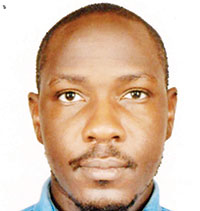
 There is a particular magic to the early morning in Kampala.
There is a particular magic to the early morning in Kampala.
The city stirs not with a groan, but with a vibrant, chaotic energy. The sun has yet to crest the hills when the symphony begins: the sputter of boda-bodas weaving through impossibly small gaps, the rhythmic clatter of vendors arranging their wares, the calls of taxi touts vying for passengers.
It was in this dynamic, pre-dawn light that our ambitious endeavour, ‘the Project for the Improvement of Traffic Control in Kampala, supported by the Japan International Cooperation Agency (JICA), felt most alive and most necessary.
As a young Ugandan engineer, I have had the privilege of helping to shape this first-of-its-kind integrated traffic control system in East and Central Africa. As we prepare to hand it over to the people of this city, my reflection go beyond the technical achievement; the 27 signalised junctions, and the state-of-the-art Traffic Control Centre, to a profound professional and human growth that occurs when vision is forged in the crucible of real-world implementation.
I began this project with a graduate’s mindset, expecting a rigorous application of engineering principles. What I did not anticipate was how much I would learn about diplomacy, patience, and resilience.
Engineering, as I came to understand, does not happen on a blank page. It unfolds in a living, breathing city that refuses to pause for your designs. This experience was enriched by collaborating with Japanese experts. I expected technical precision; I left with a deep appreciation for discipline as a culture.
Meetings began and ended with a respectful punctuality with every action owned. Technical drawings were not merely checked; they were treated with a level of respect I had not encountered.
I learned that meticulous preparation is not bureaucratic paperwork but the very foundation of safety and efficiency. method statements, once routine paperwork to me, revealed themselves as the critical safeguards, often standing between a productive day and a potential full-blown crisis.
This quiet, steady, and thorough mindset changed me. It made me a more thoughtful engineer and a more accountable teammate. This cultural fusion of Ugandan dynamism and Japanese discipline yielded tangible results, most notably in our safety record. This was no accident.
It was born from the insistence on personal protective equipment under the unforgiving sun, from daily toolbox talks that felt repetitive until that one crucial reminder about an overhead line prevented a disaster.
It was in the way seasoned supervisors instinctively looked out for new recruits, and how we collectively learned the courage to pause when haste threatened to override caution. In a city where speed is a survival tactic, choosing to slow down for safety is a radical and vital act.
Of course, the challenges extended far beyond the site perimeter. Global supply chain disruptions, fallout from the Covid-19 pandemic and a distant conflict, turned delivery schedules into moving targets. We phased complex works in live traffic, constantly adjusting to avoid chocking the very flow we aimed to improve.
Against this backdrop, delivering this project on time and to a high standard was a collective achievement. Now, walking through upgraded junctions like Mulago, Kubbiri, or my favourite, Rwenzori, one can see the tangible change: cleaner approaches, safer pedestrian crossings, and hardware installed not for years, but for decades.
Inside the Traffic Control Centre, the magnificent video wall displays the city’s real-time pulse. Watching the network breathe, seeing signal offsets and splits tuned not just to theory but to Kampala’s unique rhythm, is a quiet thrill.
This project reveals what is possible through genuine partnership. JICA’s support was not merely financial; it was a belief that Kampala deserves best-practice systems, not hand-me-downs. This ethos opened doors for training, insisted on knowledge transfer, and held the quality bar high when compromise would have been easier.
It afforded me the incredible opportunity to travel to Tokyo, where I witnessed how disciplined coordination and seamless maintenance come together as one integrated, almost invisible system— quietly enabling infrastructure that is both innovative and enduring.
As the hand-over ceremony approaches, the people of Kampala should feel a sense of ownership and pride. But a good control system is not an end; it is a living, learning entity. The path forward is clear: we must expand the network, making coordination a citywide standard.
We must integrate with mass public transport, so buses move with reliability. We must safeguard railway crossings and, crucially, we must use the rich data this system now provides to inform everything from infrastructure planning to pedestrian safety.
Additionally, we must demand proper infrastructure maintenance and actively discourage vandalism to ensure the long-term sustainability and resilience of these vital systems. I began this journey as a project engineer.
I conclude this phase as a student, taught by a relentless city, by mentors from Japan and Uganda, by supervisors, fibre crews, and traffic officers who know their roads like fishers know the currents.
When the lights turn green in unison on commissioning day, I will think of the early mornings and late nights, our first trench and the last cable we tested. I will think of Tokyo and Nakasero, of spreadsheets and excavators, and of the patient, powerful work of many hands.
And I will look to the future with gratitude, with ambition, and with the hopeful belief that our city’s best movement is still ahead.
The author is a civil/traffic engineer with Oriental Consultants Global.



